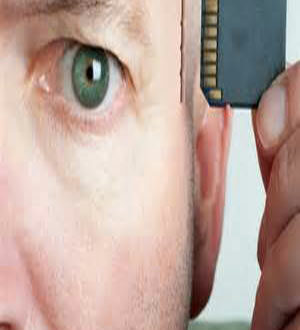Scientists Successfully Implant Chip That Controls The Brain; Allowing Thoughts, Memory And Behavior To Be Transferred From One Brain To Another
Scientists working at the University of Southern California, home of the Department of Homeland Security’s National Center for Risk and Economic Analysis of Terrorism Events, have created an artificial memory system that allows thoughts, memories and learned behavior to be transferred from one brain to another.
Activist Post
In a scene right out of a George Orwell novel, a team of scientists working in the fields of “neural engineering” and “Biomimetic MicroElectronic Systems” have successfully created a chip that controls the brain and can be used as a storage device for long-term memories. In studies the scientists have been able to record, download and transfer memories into other hosts with the same chip implanted. The advancement in technology brings the world one step closer to a global police state and the reality of absolute mind control.
More terrifying is the potential for implementation of what was only a science fiction fantasy – the “Thought Police” – where the government reads people’s memories and thoughts and can then rehabilitate them through torture before they ever even commit a crime based on a statistical computer analysis showing people with certain types of thoughts are likely to commit a certain type of crime in the future.
We already pre-emptively invade nations and torture alleged terrorist suspects with absolutely no due process of law, so the idea of pre-emptively torturing a terrorist suspect beforehand to prevent them from committing an act of terrorism in the future really isn’t that far fetched of an idea.
Perhaps a less sensational example than those I just depicted from Orwell’s famous dystopian novels would be using the technology as it is depicted the modern day Matrix movies, in which computer programs are uploaded into people’s brains allowing them to instantly learn how to perform a wide variety of tasks.
That is exactly the example that Smart Planet uses in their write-up on the USC press release.
The Matrix reality: Scientists successfully implant artificial memory system
It seems the sci-fi industry has done it again. Predictions made in novels like Johnny Mnemonic and Neuromancer back in the 1980s of neural implants linking our brains to machines have become a reality.
Back then it seemed unthinkable that we’d ever have megabytes stashed in our brain as Keanu Reeves’ character Johnny Mnemonic did in the movie based on William Gibson’s novel. Or that The Matrix character Neo could have martial arts abilities uploaded to his brain, making famous the line, “I know Kung Fu.” (Why Keanu Reeves became the poster boy of sci-fi movies, I’ll never know.) But today we have macaque monkeys that can control a robotic arm with thoughts alone. We have paraplegics given the ability to control computer cursors and wheelchairs with their brain waves. Of course this is about the brain controlling a device. But what about the other direction where we might have a device amplifying the brain? While the cochlear implant might be the best known device of this sort, scientists have been working on brain implants with the goal to enhance memory. This sort of breakthrough could lead to building a neural prosthesis to help stroke victims or those with Alzheimer’s. Or at the extreme, think uploading Kung Fu talent into our brains.
Decade-long work led by Theodore Berger at University of Southern California, in collaboration with teams from Wake Forest University, has provided a big step in the direction of artificial working memory. Their study is finally published today in the Journal of Neural Engineering. A microchip implanted into a rat’s brain can take on the role of the hippocampus—the area responsible for long-term memories—encoding memory brain wave patterns and then sending that same electrical pattern of signals through the brain. Back in 2008, Berger told Scientific American, that if the brain patterns for the sentence, “See Spot Run,” or even an entire book could be deciphered, then we might make uploading instructions to the brain a reality. “The kinds of examples [the U.S. Department of Defense] likes to typically use are coded information for flying an F-15,” Berger is quoted in the article as saying.[…]In this current study the scientists had rats learn a task, pressing one of two levers to receive a sip of water. Scientists inserted a microchip into the rat’s brain, with wires threaded into their hippocampus. Here the chip recorded electrical patterns from two specific areas labeled CA1 and CA3 that work together to learn and store the new information of which lever to press to get water. Scientists then shut down CA1 with a drug. And built an artificial hippocampal part that could duplicate such electrical patterns between CA1 and CA3, and inserted it into the rat’s brain. With this artificial part, rats whose CA1 had been pharmacologically blocked, could still encode long-term memories. And in those rats who had normally functioning CA1, the new implant extended the length of time a memory could be held.
[…]Source: Smart Planet
The Smart Planet article goes on to point out that the next phase in testing will be done on primates and will eventually be tested on humans.
 Mouood Mouood English Edition
Mouood Mouood English Edition




